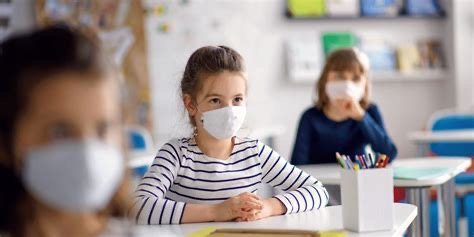New Study Challenges CDC Evidence on School Masking
Throughout the COVID-19 pandemic, adults placed a significant burden on children. An analysis from McKinsey & Co. shows pandemic school closures and hybrid learning resulted in a significant drop in student achievement, costing students $49,000 to $61,000 in future lifetime earnings. This outcome in addition to the mental health toll reveals that school closings and various restrictions had significant consequences for students.
As the country revoked masking restrictions, schools came last. Students wore masks for months after business and citywide mandates disappeared. Now large school districts like Philadelphia’s, are reintroducing mask mandates in response to rising cases.
School districts justify these mandates by relying on observational studies produced by the CDC. The most influential of these studies is “Pediatric COVID-19 Cases in Counties With and Without School Mask Requirements — United States, July 1–September 4, 2021”, authored by Budzyn et al.
Unsurprisingly, the authors find that “Counties without school mask requirements experienced larger increases in pediatric COVID-19 case rates after the start of school compared with counties that had school mask requirements.” Yet, one must remember the now overused saying: Correlation does not equal causation.
However, a new re-analysis of the data used in the study, produced by Ambarish Chandra and Tracy Høeg, finds that school masking is not associated with pediatric case rates.
Chandra and Høeg’s analysis, which uses a larger population and longer time interval, is more comprehensive than the CDC’s. Their results show no relationship between mandating masks in schools and COVID case rates in students. The authors also highlight problems with the initial CDC study, including context surrounding biases in the CDC’s medical journal and related scientific publications.
Study Methods and Results
The authors maintain that their study serves two purposes: first, to replicate and extend the original study, and second, to illuminate problems with observational studies. Their second purpose is important for public health policy, as observational studies using limited data have been used by the CDC to justify numerous public health interventions.
Using the same methods and criteria as the CDC study, they expand the sample size by analyzing “data from three weeks prior to schools opening to six weeks following opening” in contrast to the two-week timeframe used in the original study. Further, the authors use data from a more recent release (October 25), to create an additional larger sample set of counties which they use to evaluate the robustness of their results.
They find that “using the same methods and sample construction criteria as Budzyn et al., but a larger sample size and expanded time frame for analysis, we fail to detect a significant association between school mask mandates and pediatric COVID-19 cases.”
The authors argue that the discrepancies between the two studies are a result of the CDC’s oversampling of schools in Southern states that start in August. In contrast, their paper includes Northern states that start school in September.
CDC Bias
The new study also highlights issues of biases within the CDC’s research. For instance, the CDC’s own journal, the Morbidity and Mortality Weekly Report (MMWR) refused to publish Chandra and Høeg’s work. This is curious, given that the authors exactly replicated the CDC’s own paper with additional data and robustness. As they explain,
Certain journals may also only publish findings that fit their preference, as was the case with our analysis; our expanded version of the original Budzyn et al publication was not accepted for publication by MMWR despite using the same methods, but with an expanded population and time frame. This bias can lead to the published “science” being a self-fulfilling prophecy rather than an unbiased pursuit of truth.
Conclusion
The results of this study demonstrate, with more data and robustness than the CDC’s own paper, that masks in schools are an ineffective tool against COVID-19. The CDC’s decision not to publish this study in their journal only further discredits the agency. While unsurprising given their propensity for choosing politics over science throughout the pandemic, the CDC is only doing our children a disservice by promoting policies that may do more harm than good.
*****
This article was published by AIER, American Institute for Economic Research, and is reproduced with permission.




